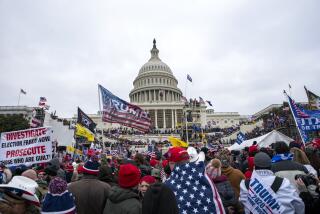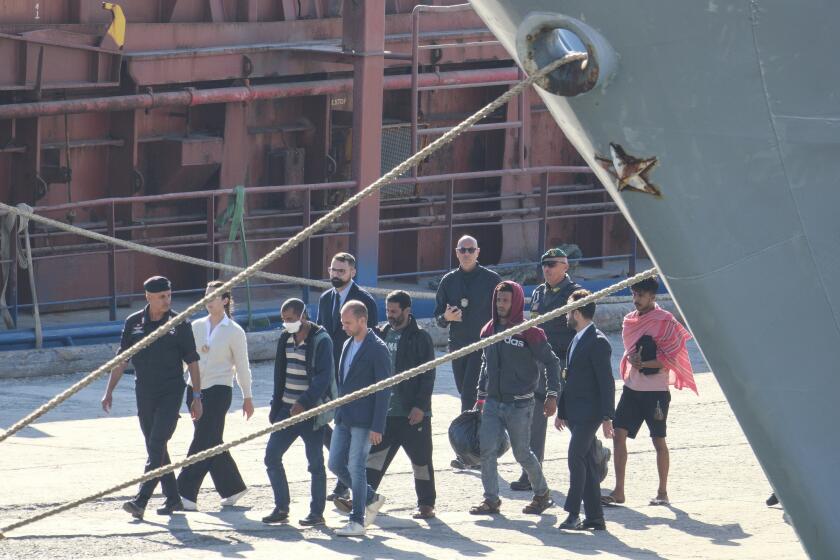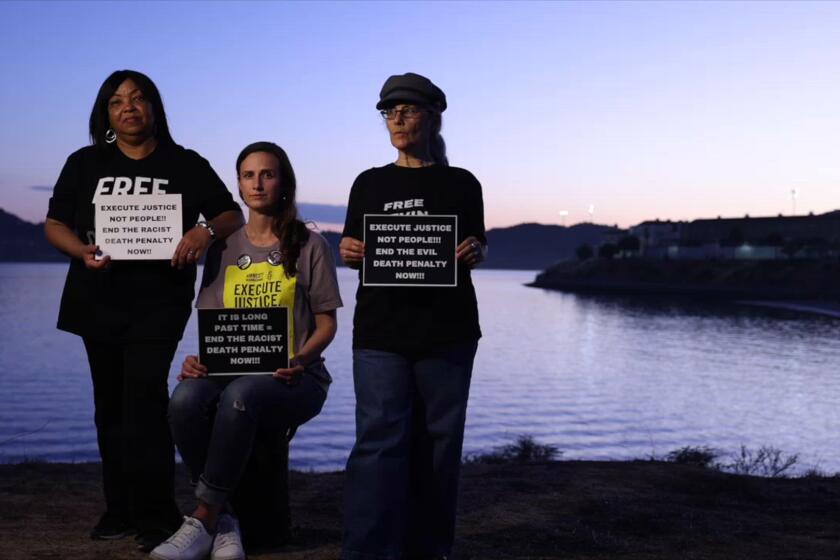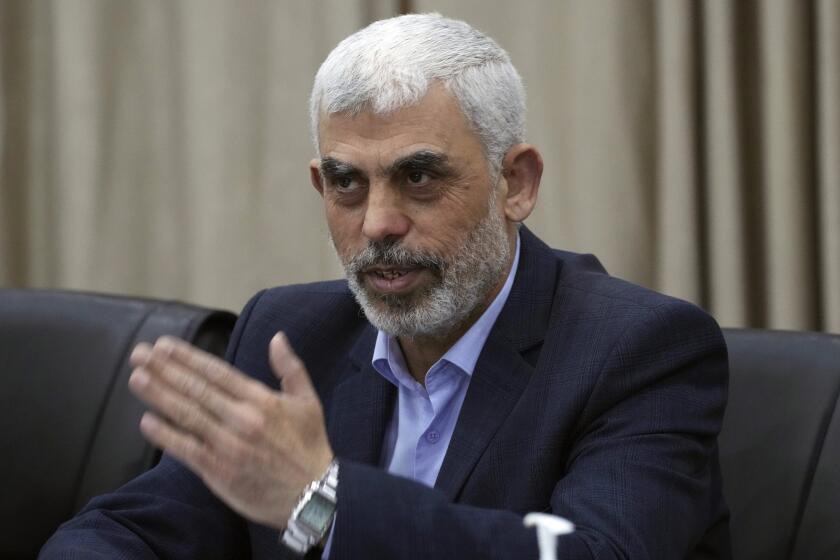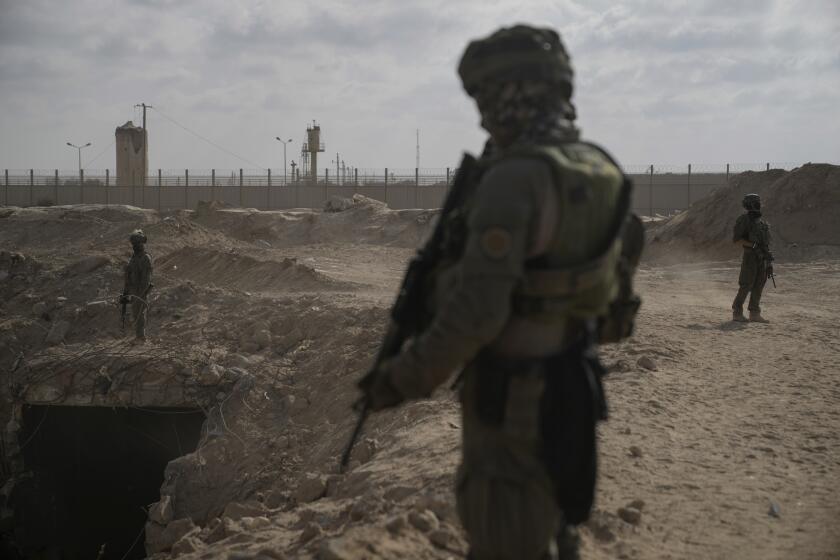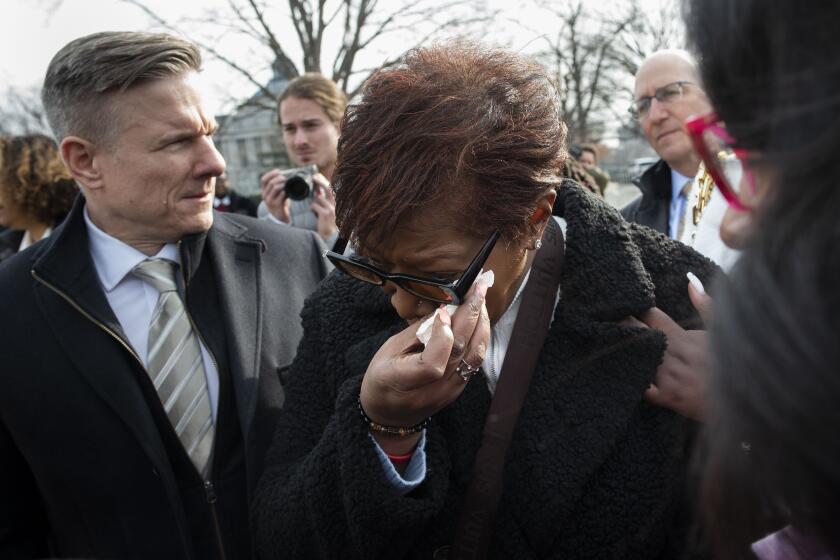U.S. Refuge for Victims of Apartheid
Edward J. Perkins, the new American ambassador to South Africa, arrives in a country hurtling toward civil war, represents an Administration whose policy is in disarray, and occupies an office that is regarded with a mixture of distrust, anger and contempt by nearly all racial groups in that country.
Secretary of State George P. Shultz correctly characterized Perkins’ assignment as diplomacy “conducted in a mine field.” Obviously, promoting U.S. interests in South Africa cannot be laid solely on the shoulders of a single courageous Foreign Service officer. His role is crucial, but it needs to be strengthened by visible demonstrations of a substantive policy shift.
The economic sanctions legislation enacted in September lays out the direction of that shift. Among other things, the law affirms that it is U.S. policy “to assist . . . the victims of apartheid as individuals and through organizations to overcome the handicaps imposed on them by the system of apartheid.” The measures to accomplish this include educational assistance, legal aid, leadership training, diplomatic pressure and, if necessary, additional sanctions--all useful tools.
But a further step could be taken with the simple stroke of a pen. Washington could make a dramatic political statement by offering refugee resettlement in this country to the most compelling cases--regardless of race--to victims of apartheid persecution, just as it offered political asylum to Yuri F. Orlov, a prominent Soviet dissident, and victims of tyranny in other countries.
Historically, U.S. refugee efforts in sub-Saharan Africa have been limited to monetary assistance and humanitarian relief. African nations have been generous in offering long-term asylum to their neighbors, thereby obviating the need for large-scale third-country resettlement. Resettlement of African refugees here has been scant. In fiscal year 1986, fewer than 2,000 Africans, nearly all of them Ethiopians, were admitted as refugees to the United States out of a worldwide total of almost 63,000 refugee grants. For the fiscal year that began Oct. 1, 3,500 “slots” have been provided for Africa out of a global ceiling that has been raised to 70,000. Of those 70,000 slots, 4,000 are unassigned and could be tapped for Africa.
The basic reason for Africa receiving such token attention is that U.S. refugee policy functions chiefly to oppose communist and leftist regimes. In 1986, 94% of the refugees arriving in the United States came from communist nations, primarily Cuba and Afghanistan and those in Southeast Asia and Eastern Europe. Except for Ethiopia, Africa has no significant representation. Approximately 100 refugee students from South Africa arrive each year for post-secondary training, but most of them must return to another country of asylum if they cannot go home, and they represent a fraction of the politically persecuted population.
Congress did not intend the picture to be so one-sided. It repealed a statute in 1980 that defined refugees as persons fleeing communism or countries of the Middle East and established a non-ideological standard that accepts persons with a well-founded fear of persecution by governments of either the left or the right. To be granted refugee status, one must show the likelihood of being singled out for persecution “on account of race, religion, nationality, membership in a particular social group, or political opinion.”
Obviously, thousands of South Africans qualify. Since the June declaration of a state of emergency, an estimated 20,000 apartheid opponents have been detained without charge in the strongest crackdown on political opposition in that country’s history.
The principal targets of South African repression have been the leaders of the United Democratic Front, the major nonviolent, multiracial anti-apartheid organization, as well as students, teachers, trade union workers, community activists, clergy and journalists. On release from detention, many are issued restriction orders similar to those in the Soviet Union that prevent people from working in their regular jobs, expressing political opinion freely, attending gatherings or traveling outside a defined district. Most victims would not want to leave the country even under these conditions, but it is likely that some would seek political asylum in the United States if they knew it was possible.
A refugee initiative for these individuals could be patterned after Cuban refugee programs in which the United States has periodically admitted political prisoners after conducting interviews in Havana. This model, applied in South Africa, would commit the United States to working with a broad range of internal organizations and individuals to identify persons who wish to establish a new life outside of South Africa until apartheid was eliminated.
A refugee program of this type would help restore U.S. credibility among the majority in South Africa, support the shift in policy mandated by an overwhelming bipartisan vote in Congress, and show--in deed as well as in word--that America stands for universal principles of justice and morality wherever tyranny prevails.
More to Read
Sign up for Essential California
The most important California stories and recommendations in your inbox every morning.
You may occasionally receive promotional content from the Los Angeles Times.

